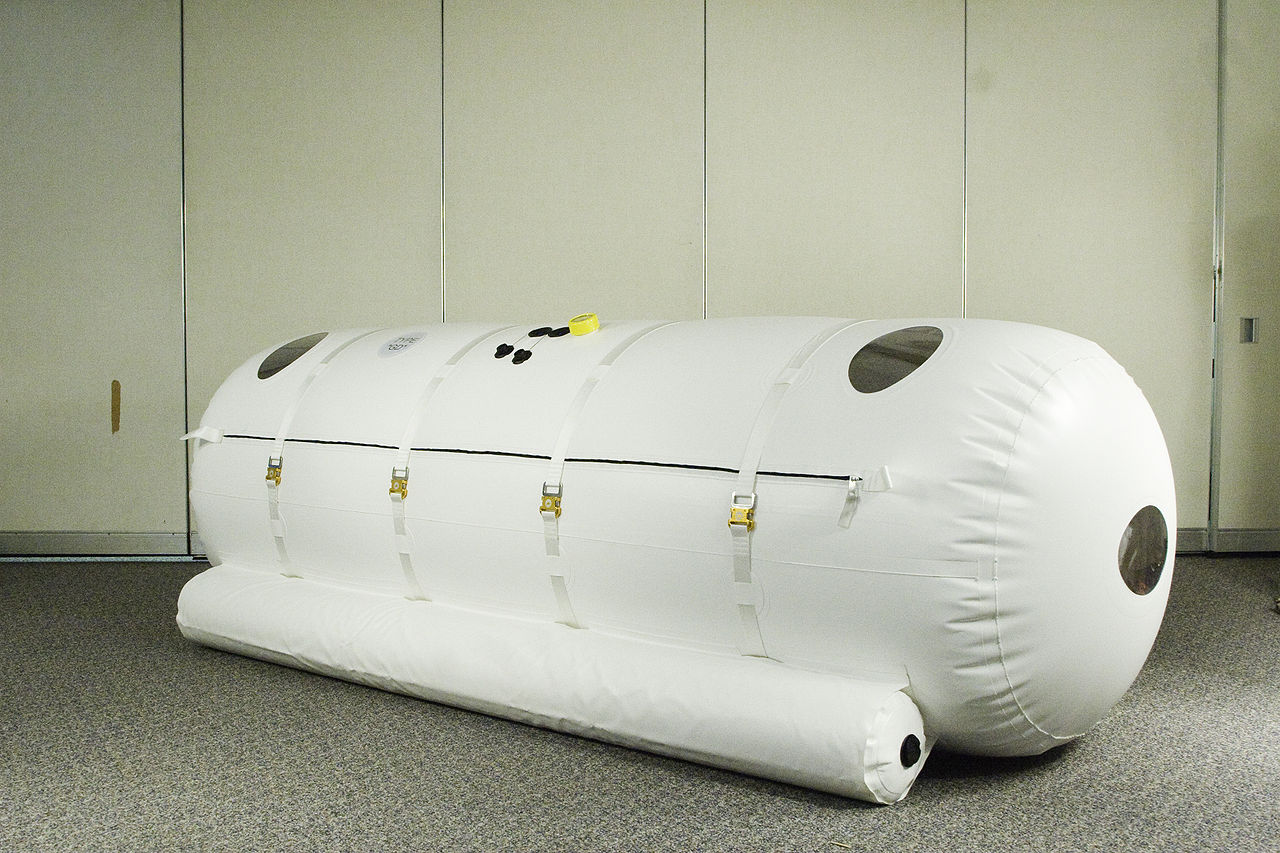Autistic patients have been shown to benefit from hyperbaric oxygen therapy in a study published in the British Medical Journal. The study was completed by Daniel Rossignol. Hyperbaric oxygen therapy is already considered as a treatment for a number of conditions including carbon monoxide poisoning, and bends.
Rossignol explained that the research is following what they’ve seen in their regular practice – children suffering from autism tend to see results during hyperbaric oxygen therapy.
The therapy consists of the inhalation of oxygen at a greater pressure than the atmosphere. Many physicians are already using this treatment because of the anecdotal evidence that’s been around the medical community but the research has not been completed. This is the first double-blind, controlled, and significant clinical experiment to measure its effectiveness.

A father and his son inside a hyperbaric oxygen chamber. The boy is being treated for autism spectrum disorders.
The study was completed throughout the United States in six different locations. 62 autistic children were provided with 24% oxygen at 1.3 atm pressurization or 21% oxygen at 1.03 atm pressurization. The treatment lasted for an hour each time and there were a total of 40 treatments completed each. The children were between the ages of two and seven.
The autistic children that were treated with the hyperbaric, or pressurized, oxygen showed massive improvements in a number of categories including eye contact, cognitive and sensory awareness, language reception, interaction, and general functioning after only 40 hours of treatment. That was a significant improvement over the children in the control group.
Rossignol went on to explain that it’s not a cure for autism but if we can learn to improve children’s lives just a little bit, it can make all the difference in the world.
Hyperbaric therapy works for reasons that the researchers don’t quite understand yet. One idea proposed by Rossignol suggested that it could reduce inflammation that causes the restriction of the flow of blood into autistic children’s speech centers in their brain. It might also allow the brain to take in more oxygen, which could show similar results.
The International Hyperbarics Association’s Shannon Kenitz had her own input into the story. She went on to suggest that this is a quality study that’s endorsed by the medical community. That’s particularly important at a time when autism is on the rise. She said that it’s great to see another study showing the benefits of hyperbaric therapy for children suffering from autism.

